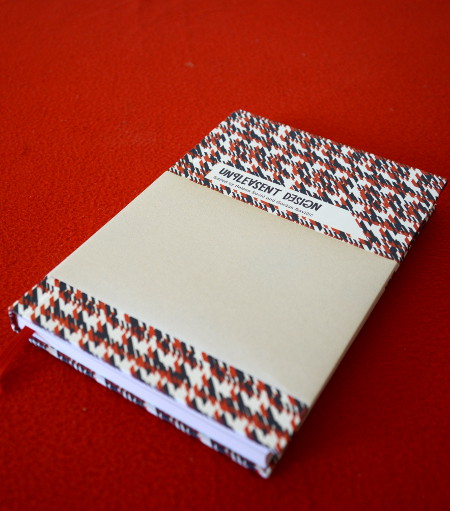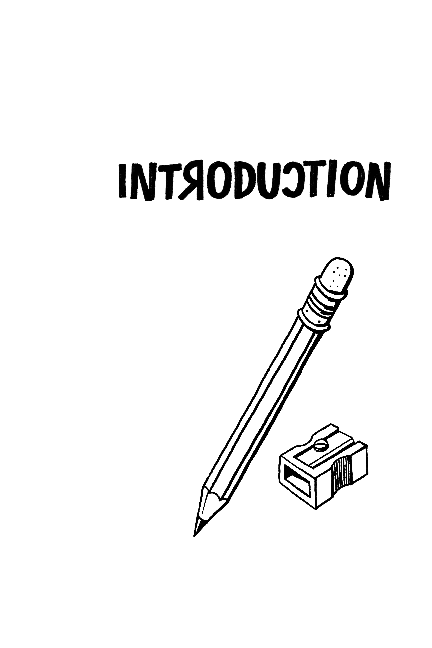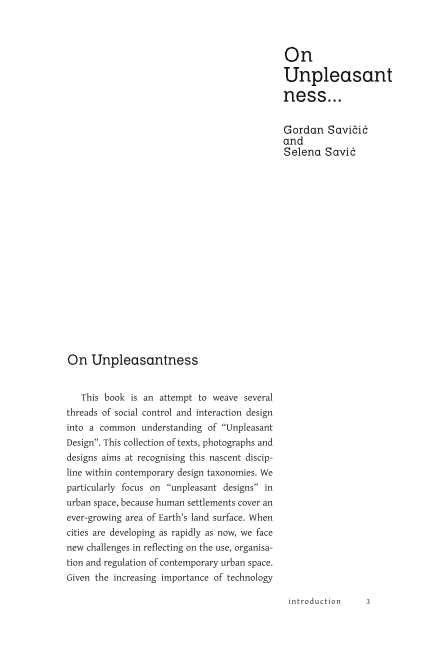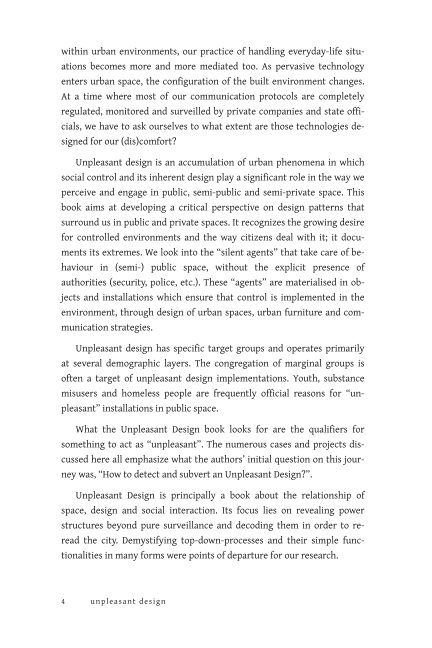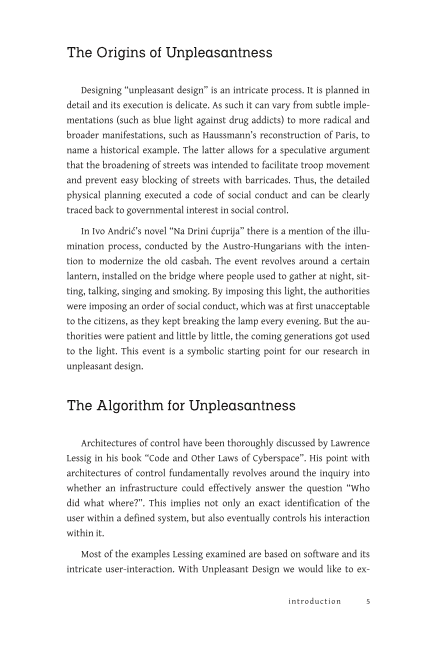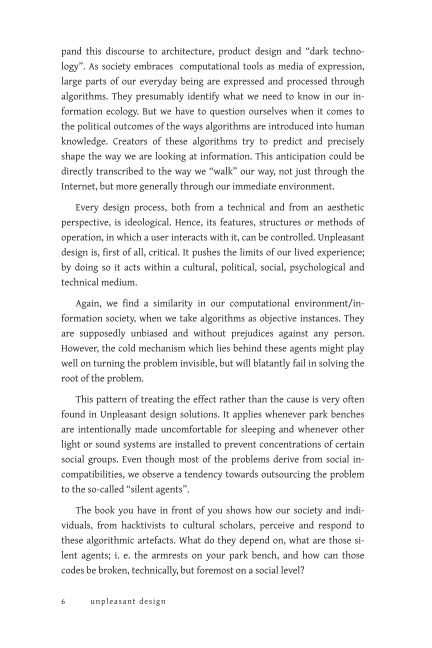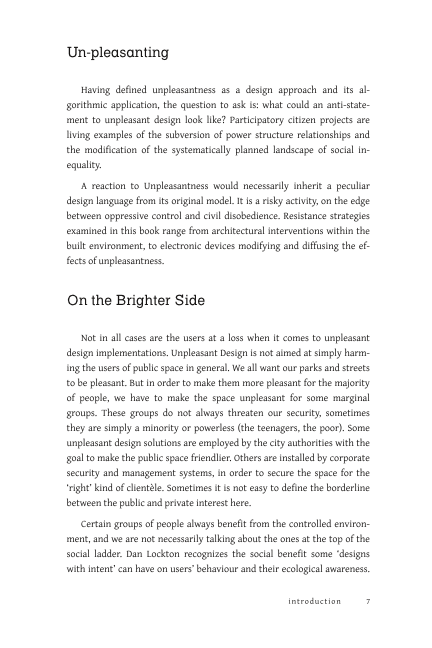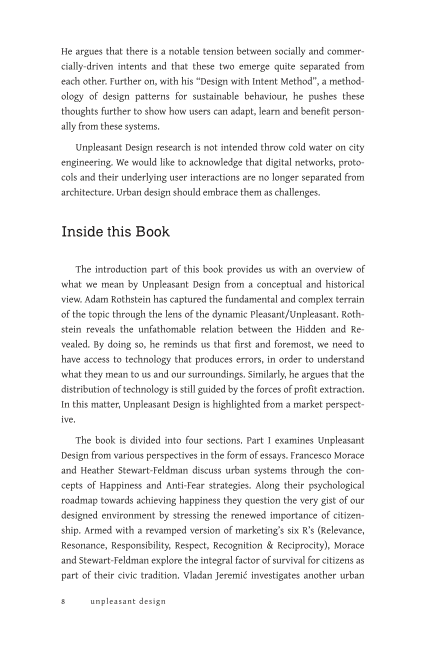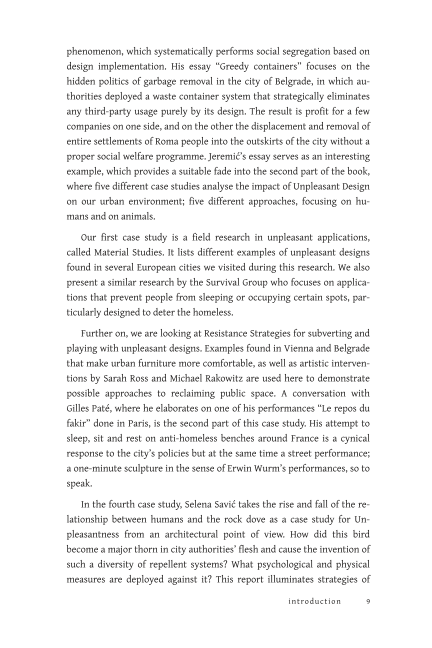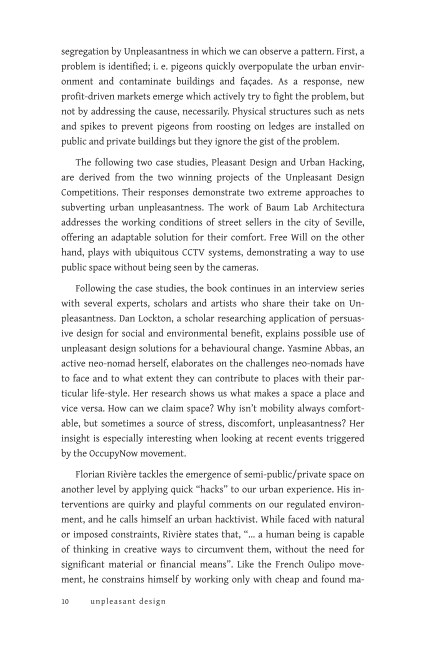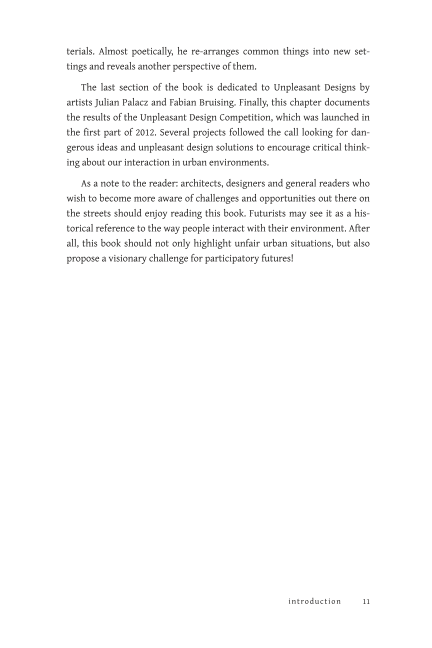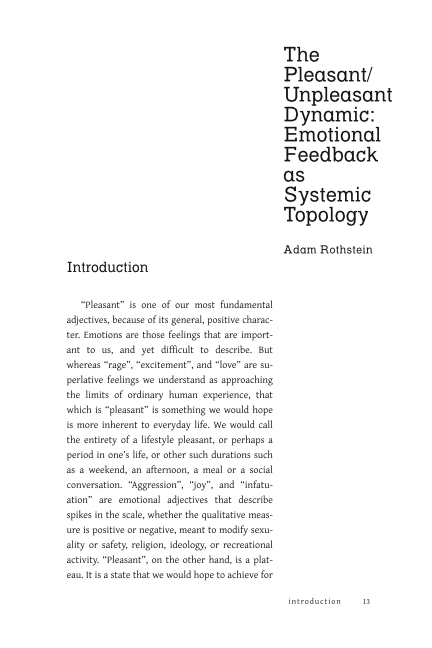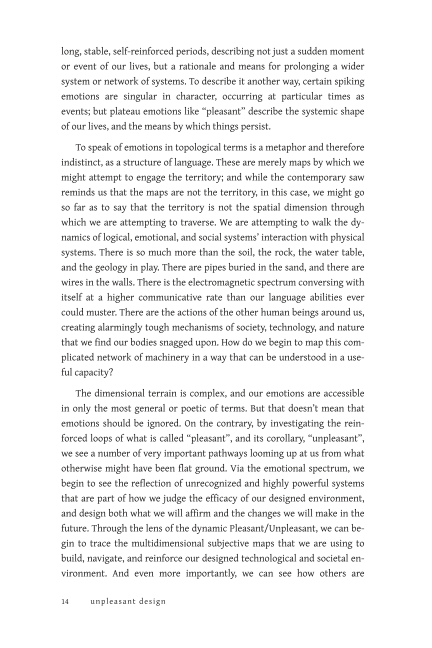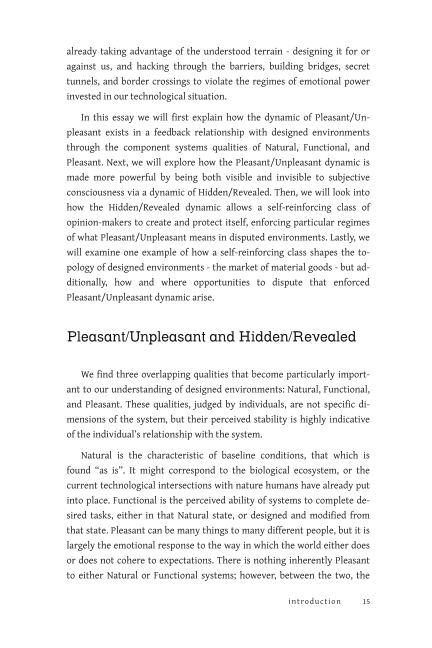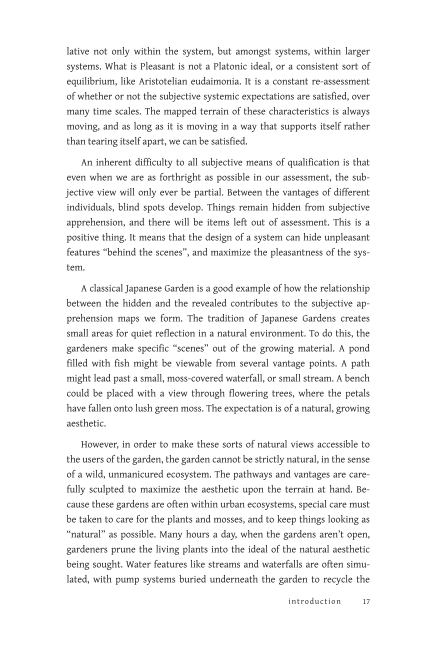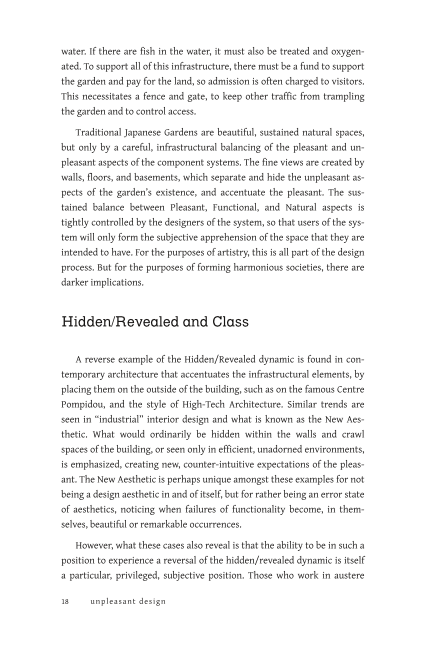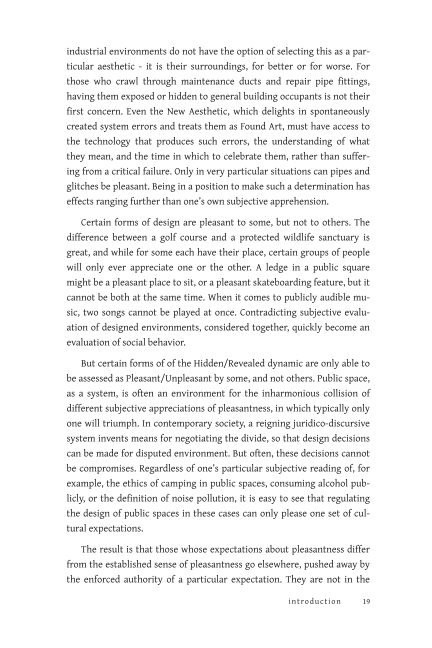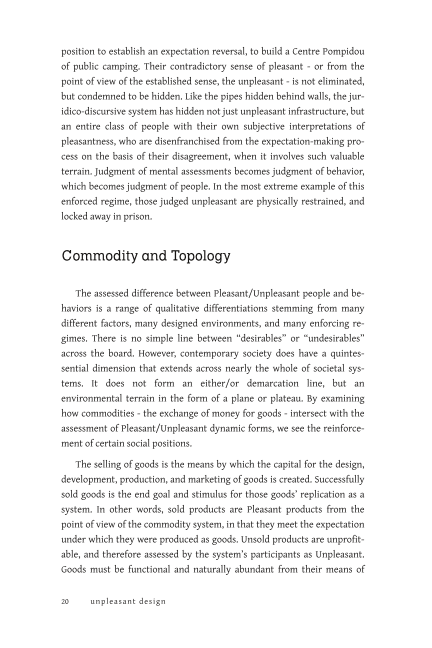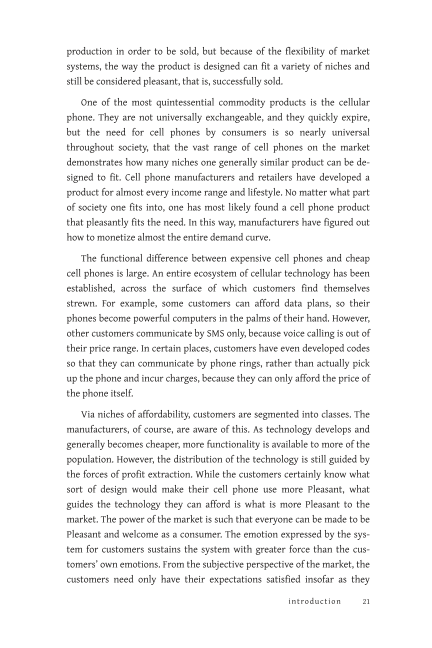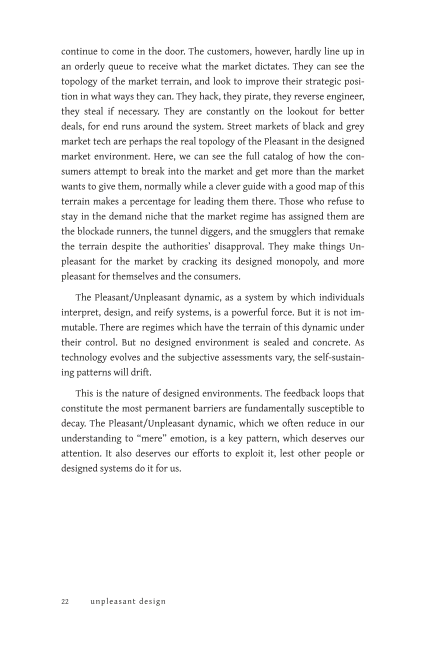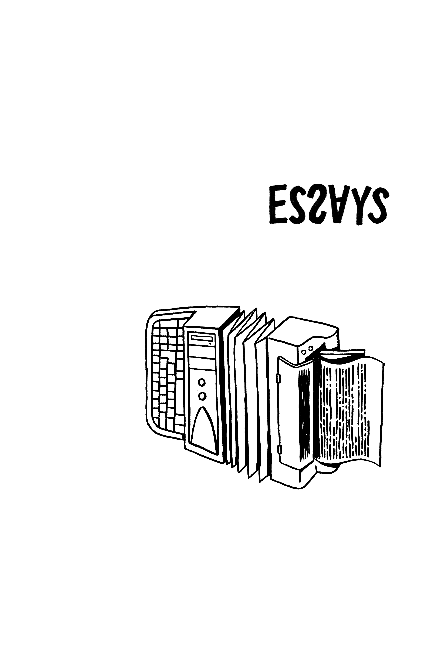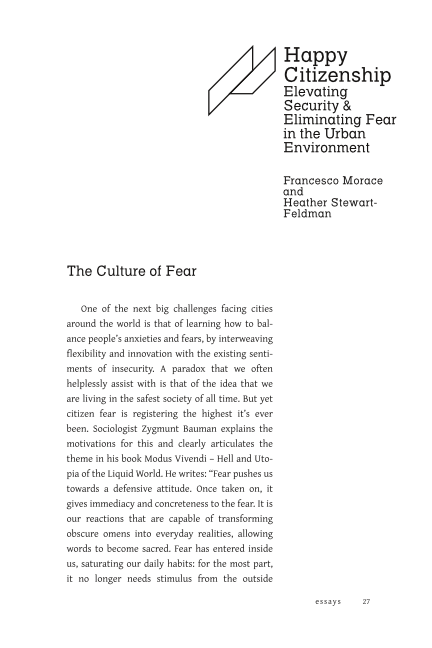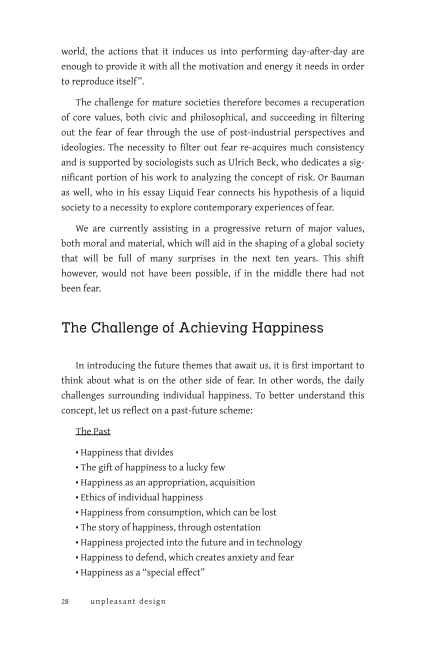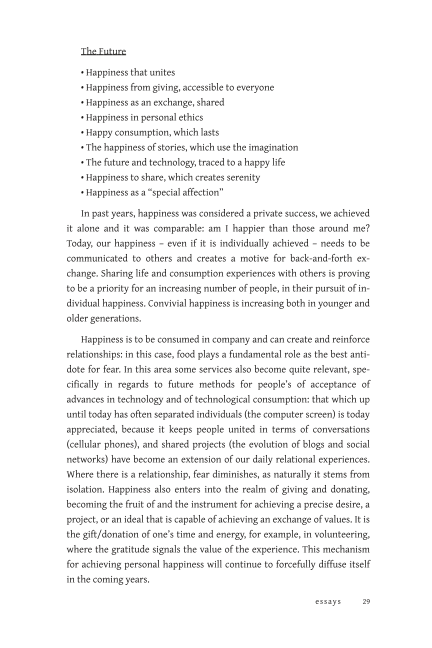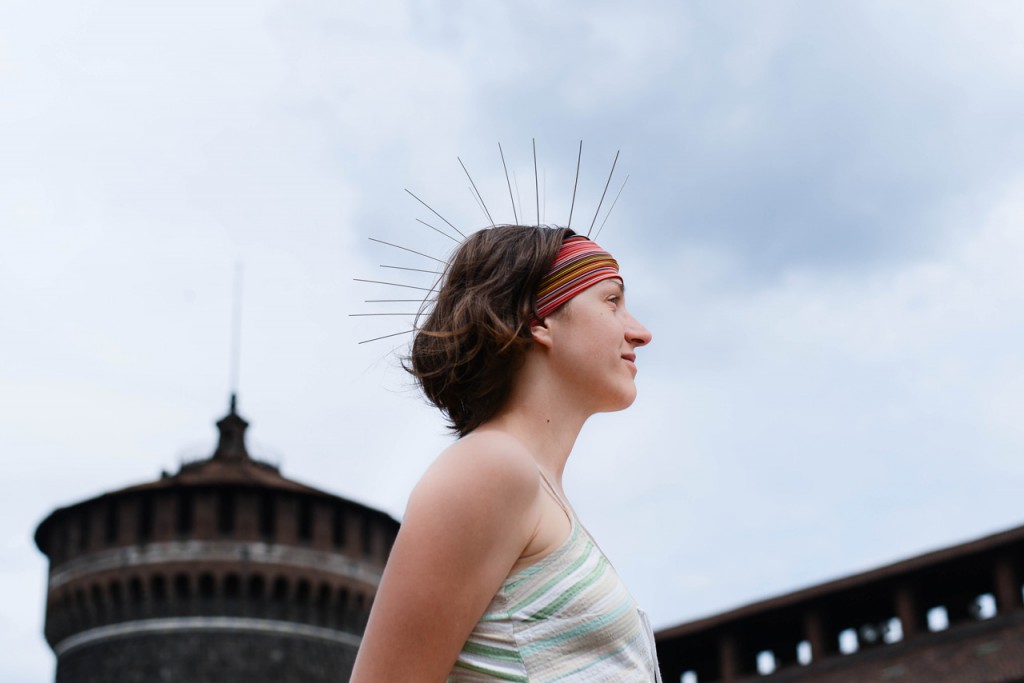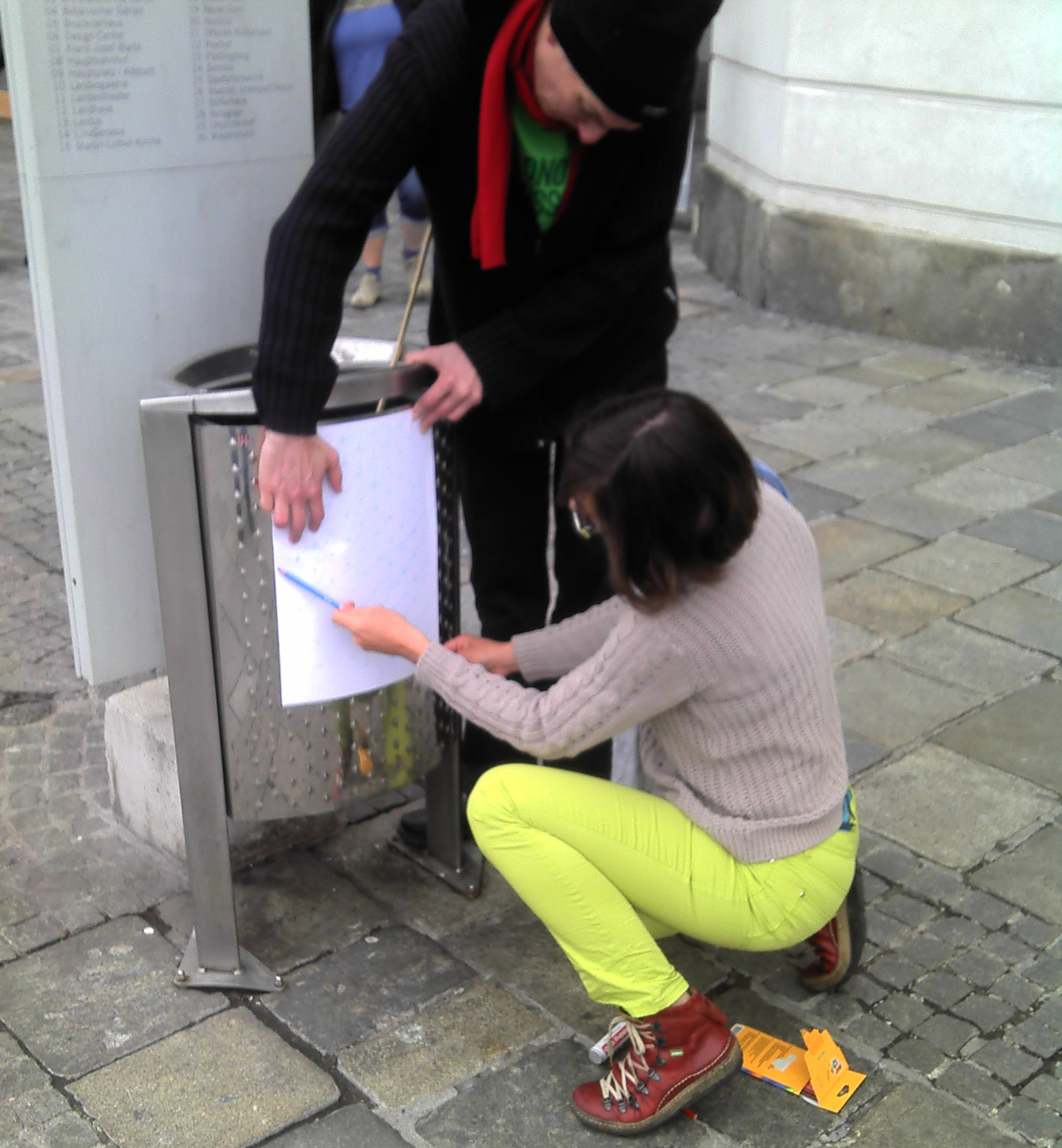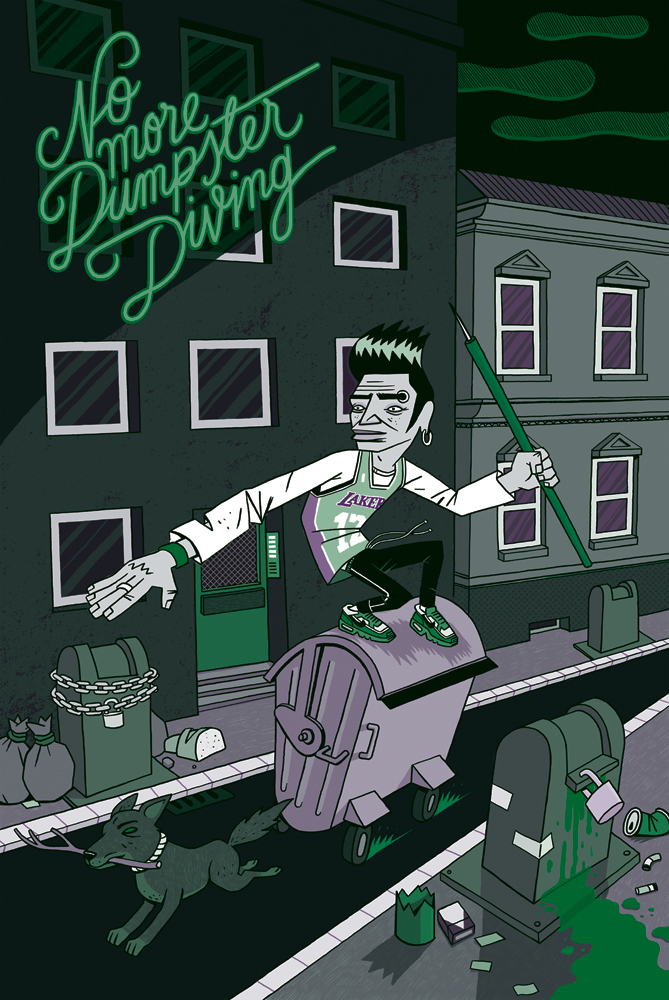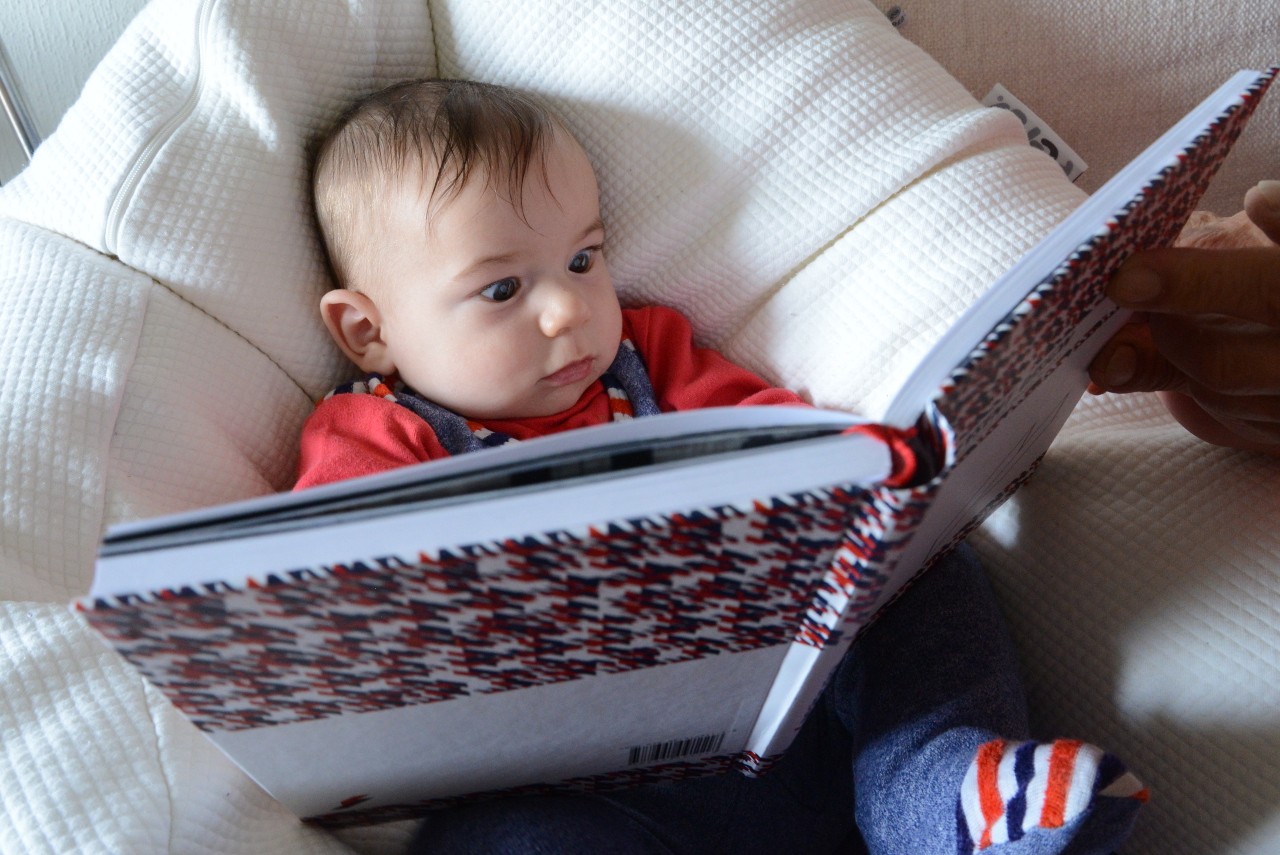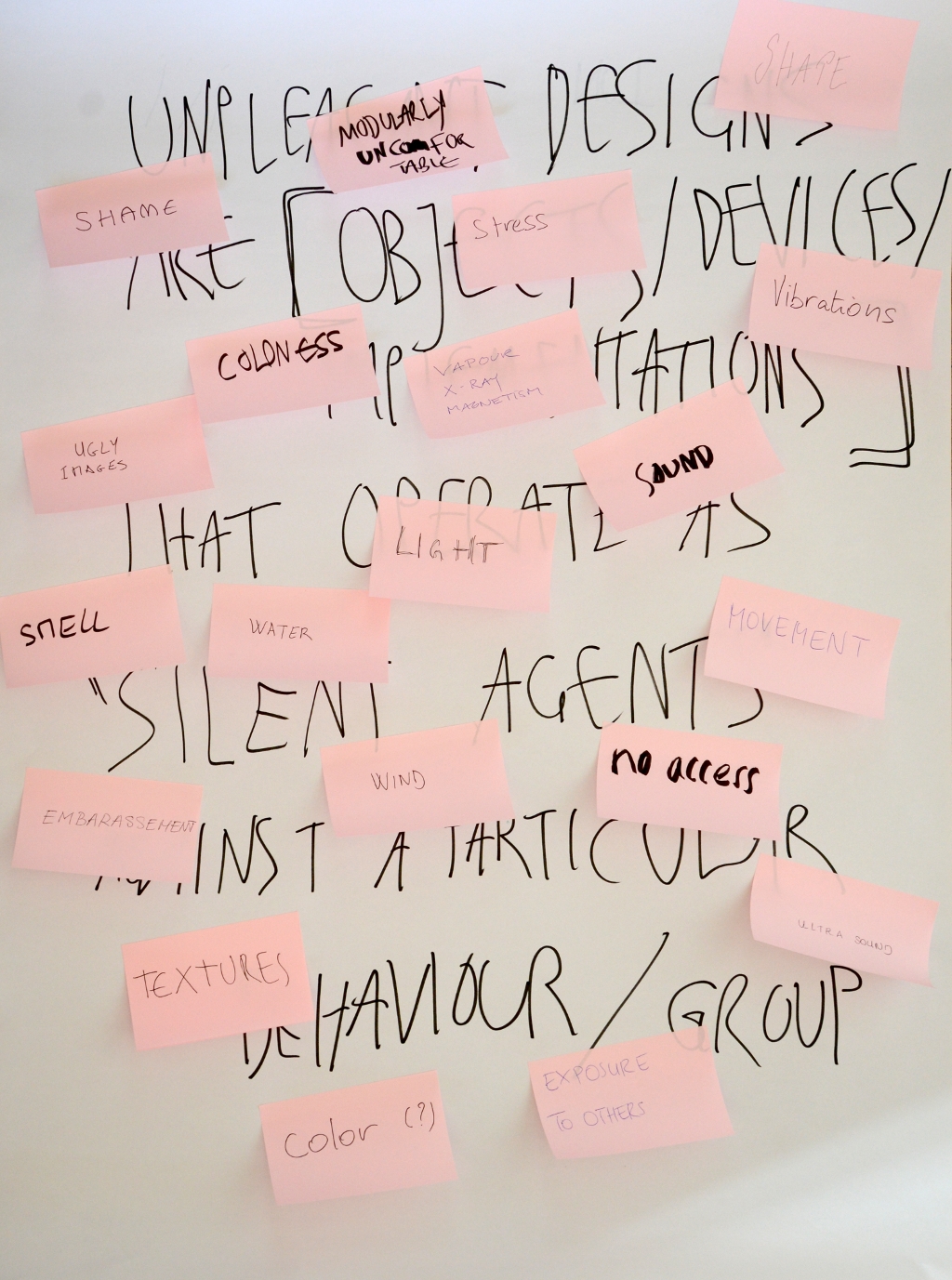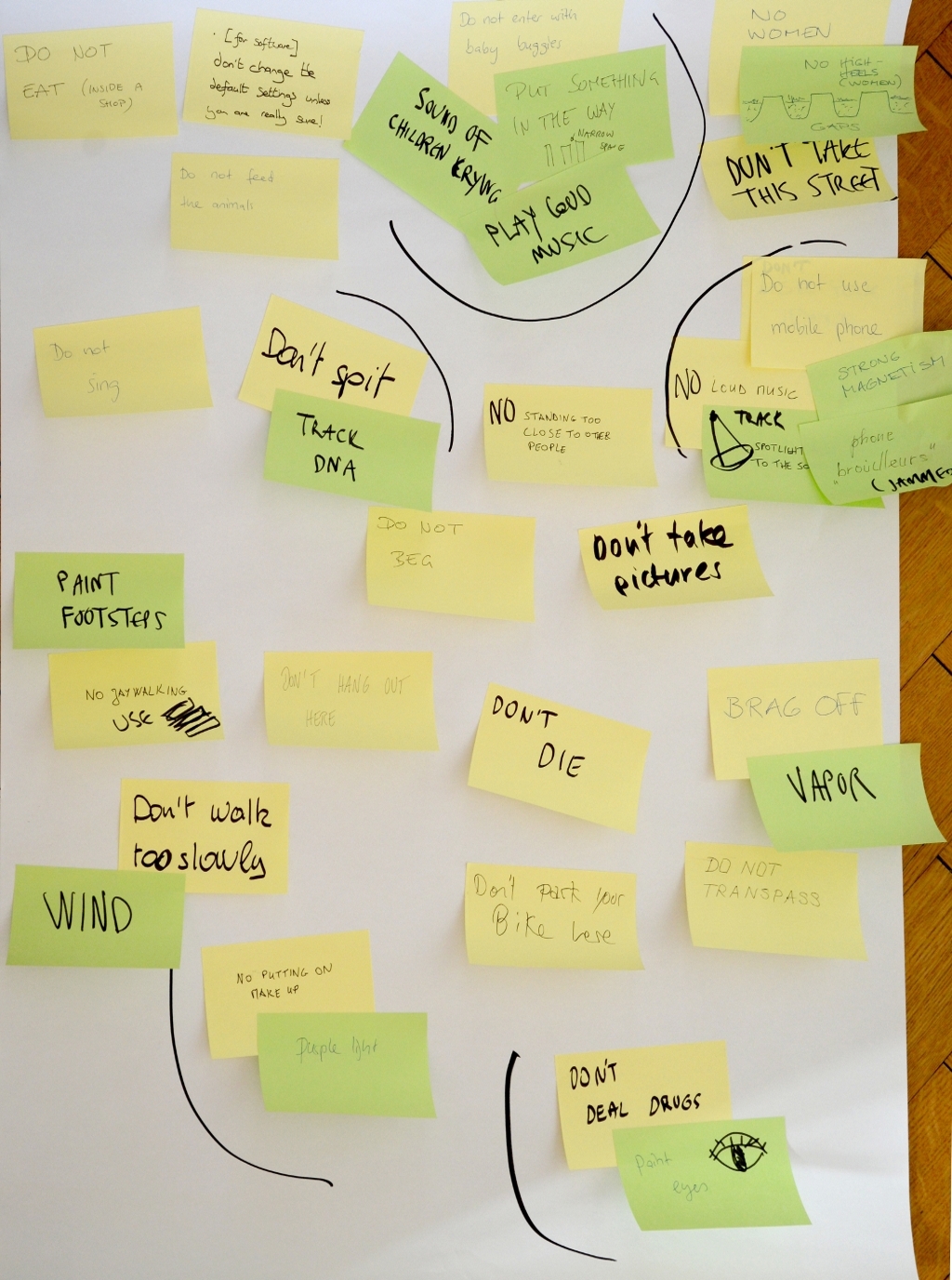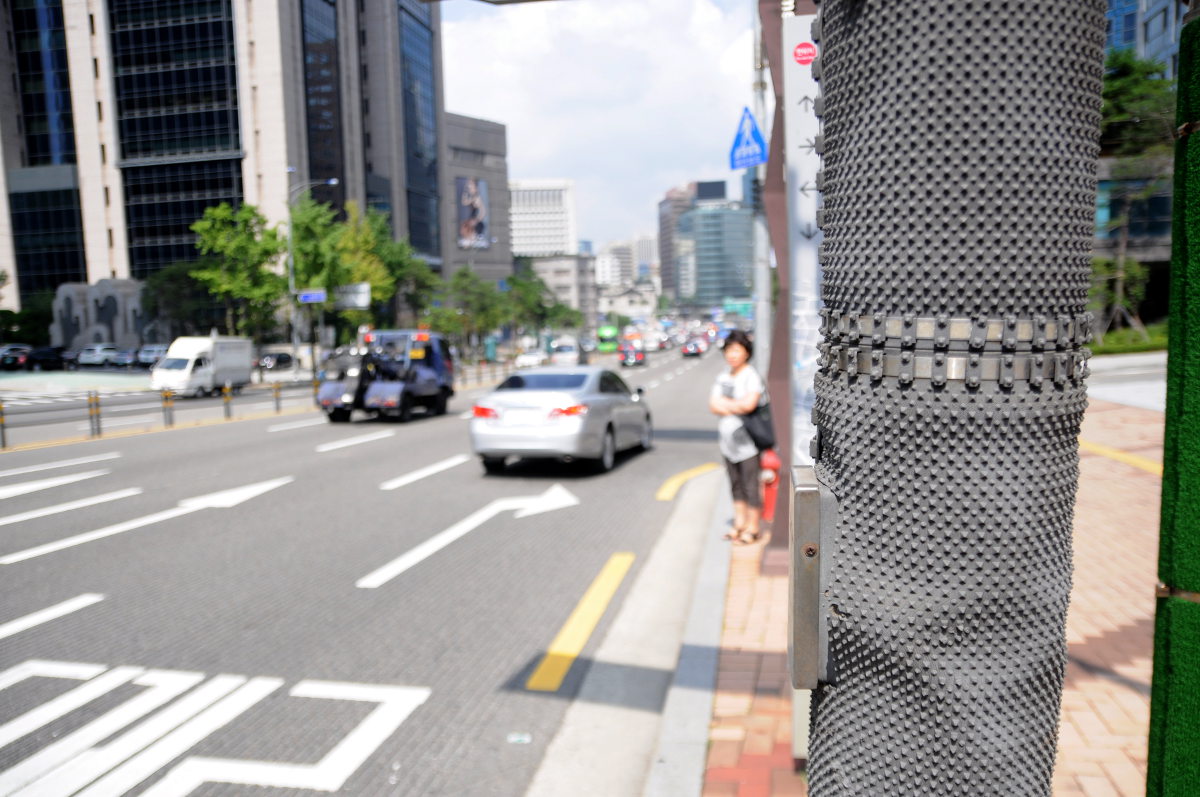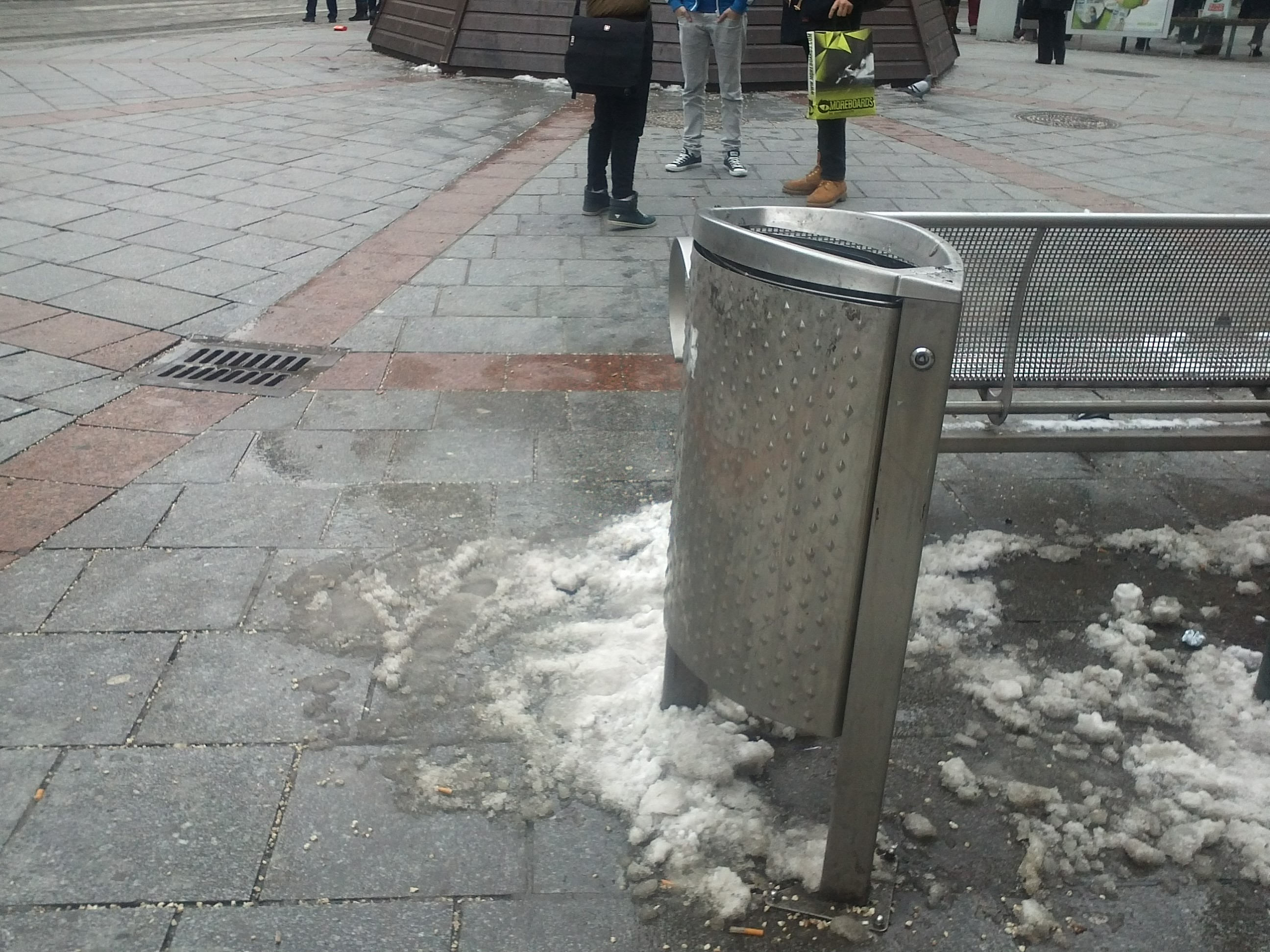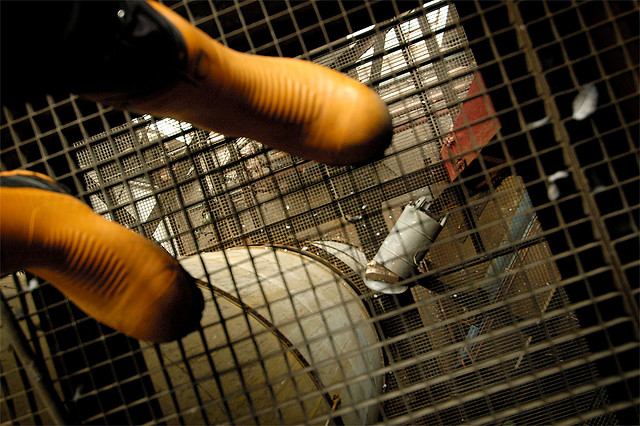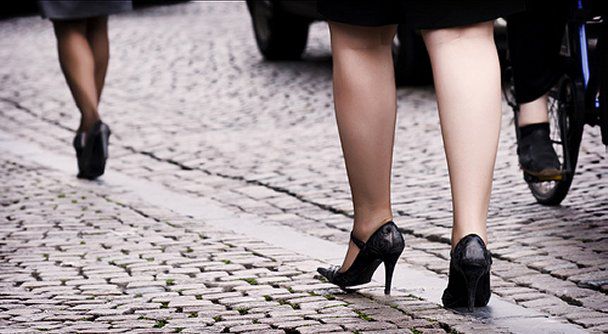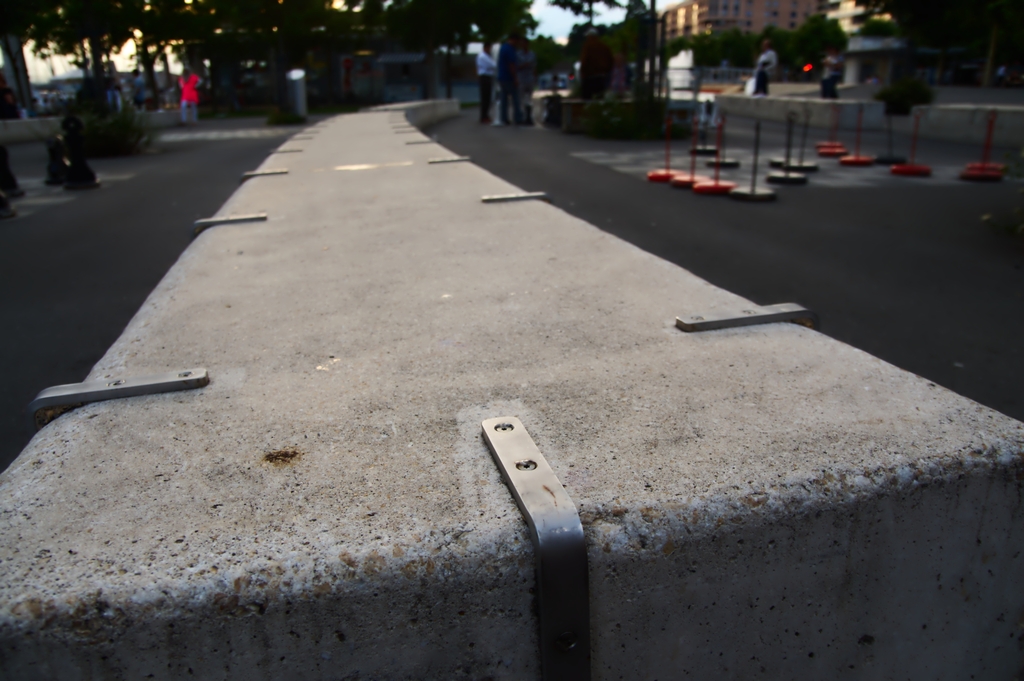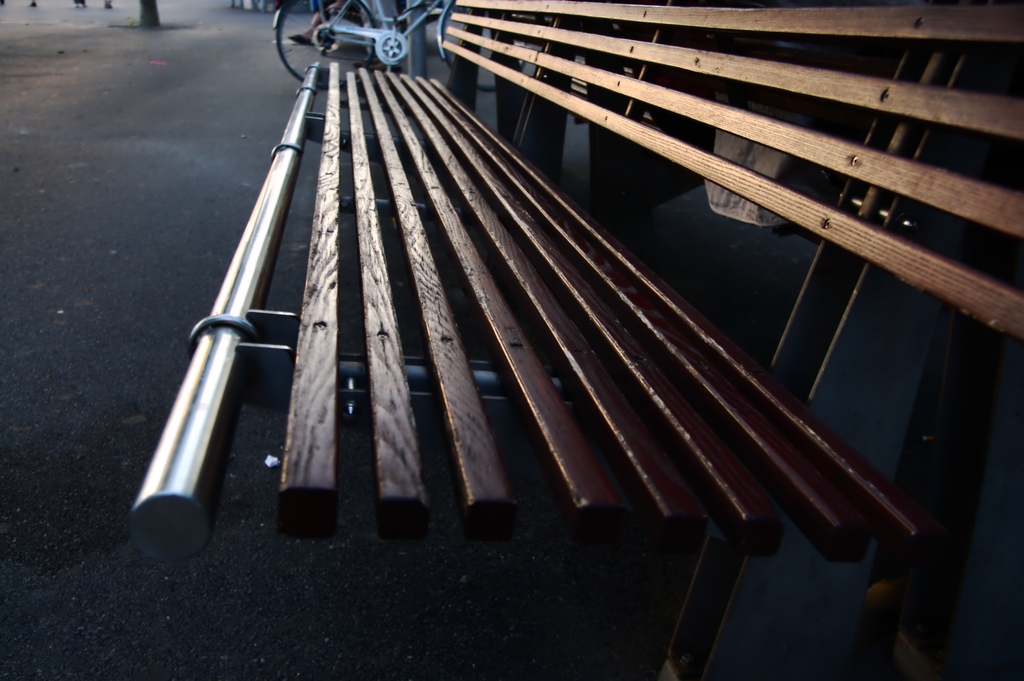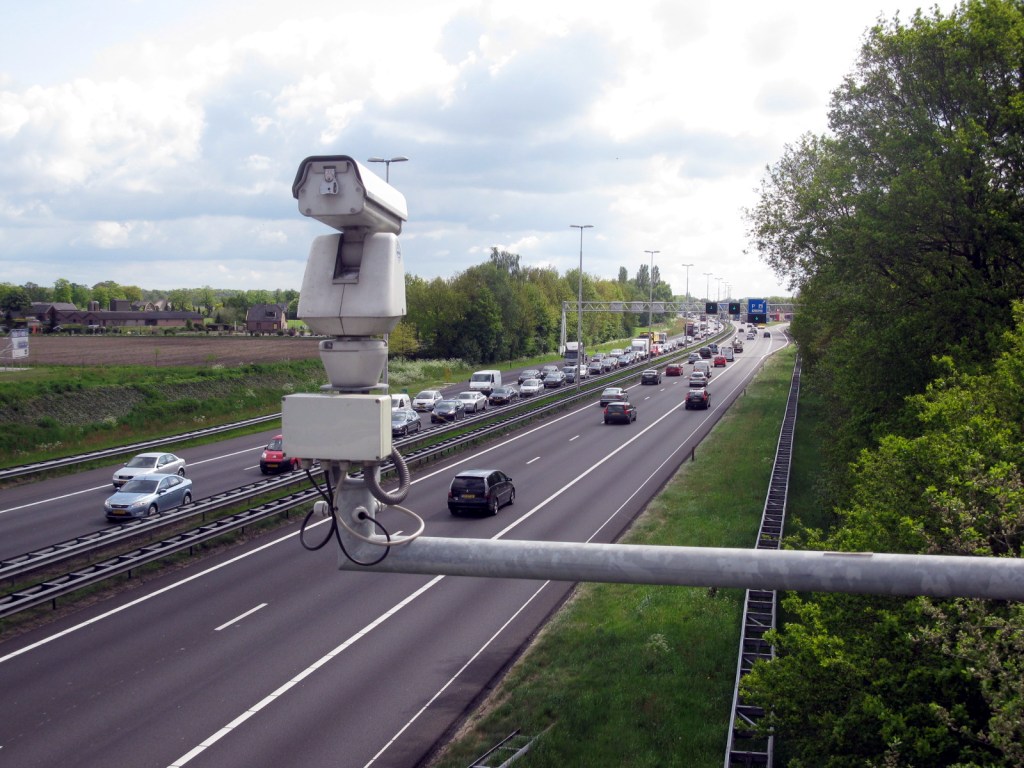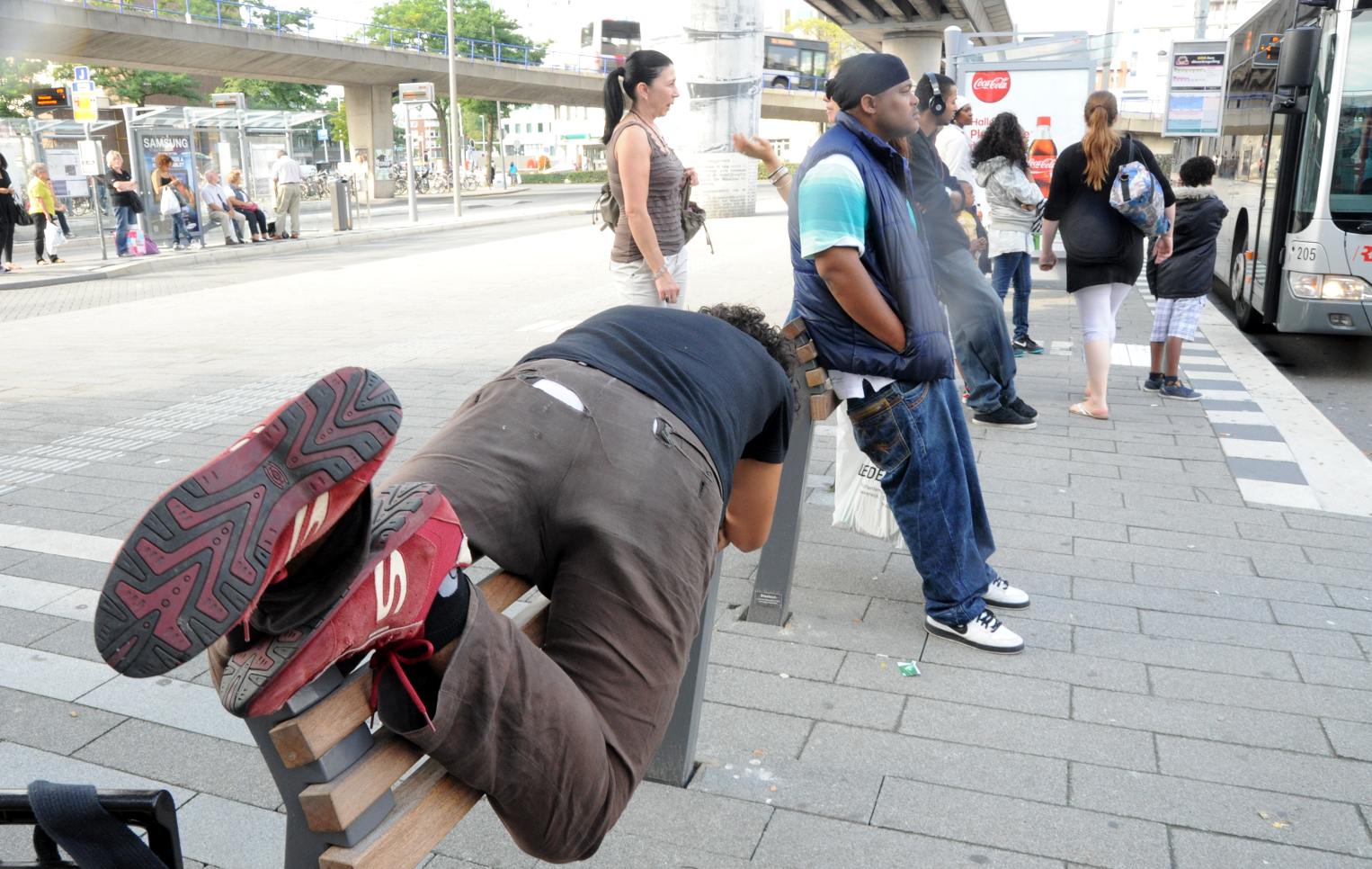From Chindogu to NSA Unpleasant Design workshop given at the Urban Kinghts event gathered some inspiring designers, artists, and theoreticians around the topics of design, exclusion, discrimination and participation in the urban environment. We formed a small think tank to cogitate current trends in urban design and the social control inherent in them.
Having set for our goal a design that will enable only a particular behaviour, we considered Berlin-specific behaviours like bottle collecting, hipsters, walking with babies, drug dealing. We listed different persuasive and coercive design techniques that could target these groups (for example facial recognition software could be used to match criminals but also to distinguish whether somebody is a hipster).
In the light of the multitudinousness of ongoing protests against different forms of oppression, and the pending economic crisis, we decided to focus on businessmen. Our businessman is someone with rather uncomfortable routines, having a strict dess-code, always carrying a briefcase, always after creating profits. Although probably enjoying his income, he is somebody who has very little time for day-to-day joy, and he rarely gets to express his own beliefs. Thus, we decided to work towards enhancing the life of a businessman with a multi-purpose suite which can be worn to regular business meetings, while at the same time serving as a kit for spontaneous, sudden protest. What we came up with is a set of designs that subvert standard businessman’s outfit into an urban protesting kit.

Continue reading →
